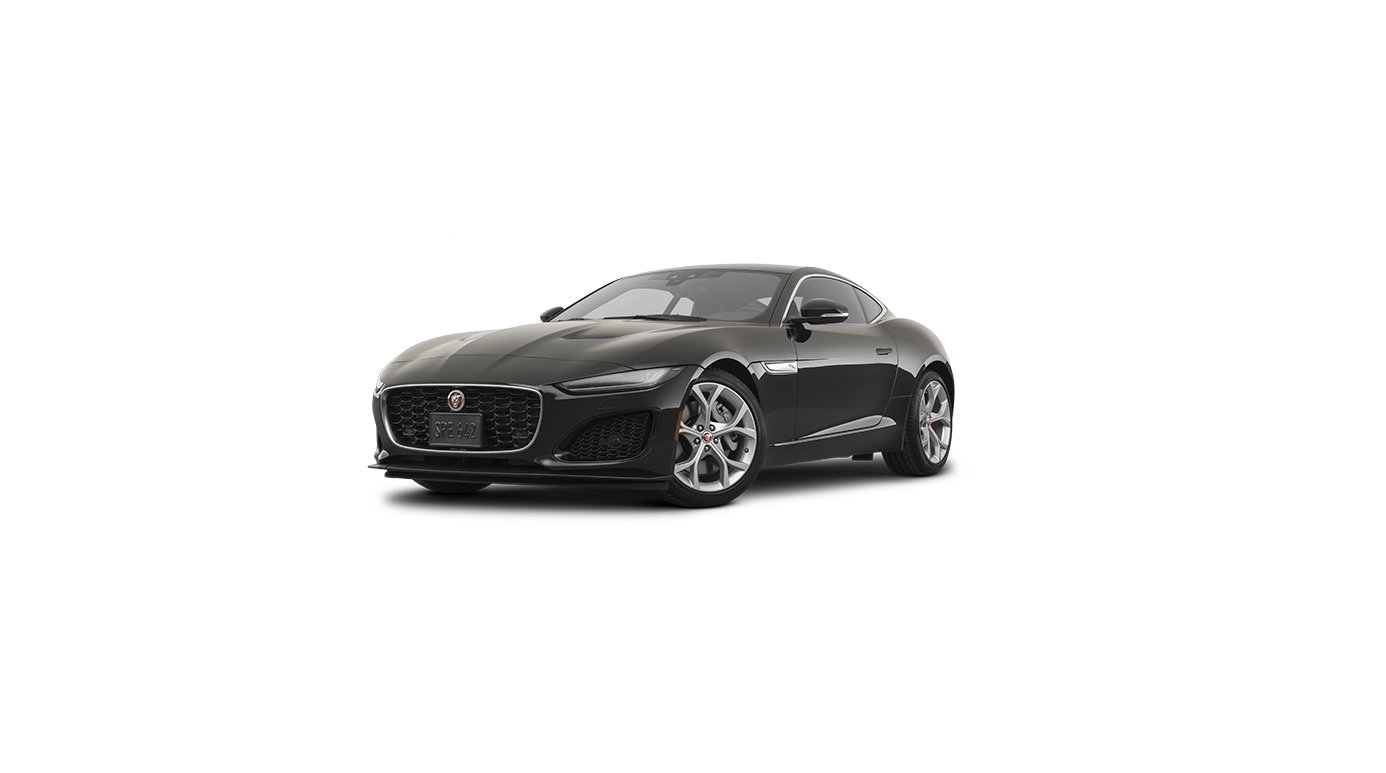2023 JAGUAR F-TYPE STABILITY CONTROL Owners Manual




2023 JAGUAR F-TYPE STABILITY CONTROL


DYNAMIC STABILITY CONTROL (DSC) SAFETY
Make sure the following warnings have been read and fully understood before driving the vehicle. Failure to follow the guidelines could result in vehicle damage, serious injury, or death.
Dynamic Stability Control (DSC) does not compensate for driver error or misjudgment. The vehicle should be driven with due care and attention at all times. Always drive in a manner that is safe for the vehicle, its occupants, and other road users. Failure to do so can potentially result in a loss of control of the vehicle.
The vehicle may initially have reduced stability and braking performance in extremely low temperatures. In these conditions, drive with extra caution.
DYNAMIC STABILITY CONTROL (DSC) OVERVIEW
Make sure the relevant safety warnings have been read and understood before driving the vehicle. See DYNAMIC STABILITY CONTROL (DSC) SAFETY.
DSC helps maintain the vehicle’s stability in critical driving situations, e.g., during unstable driving conditions such as understeer and oversteer. If required, DSC controls the engine’s power output and applies the brakes at individual wheels.
Noise from the braking system may be heard during DSC operation.
Cruise control is disabled when DSC activates.
- DSC may also activate if wheel spin is detected, to help improve the vehicle’s acceleration performance.
- DSC automatically enables when the vehicle’s ignition is switched on. Press and hold the DSC OFF button for longer than 3 seconds to switch DSC off. See SWITCHING DYNAMIC STABILITY CONTROL (DSC) OFF.
- The amber DSC lamp flashes in the instrument panel when DSC is active. See DYNAMIC STABILITY CONTROL (DSC) (AMBER).
- The amber DSC lamp illuminates permanently if the system develops a fault. Consult a retailer/authorized repairer if the fault persists.
- An alternative DSC setting is also available. TracDSC offers reduced DSC intervention. See TRACDSC.
Selecting TracDSC may reduce the vehicle’s stability and safety. Selecting TracDSC could increase the potential for a loss of vehicle control, which could lead to serious injury or death.
Make sure an appropriate DSC setting is selected for the prevailing conditions or driving style. An incorrectly chosen setting may adversely affect DSC performance.
TRACDSC
Make sure the relevant safety warnings have been read and understood before driving the vehicle. See DYNAMIC STABILITY CONTROL (DSC) SAFETY.
In addition, make sure the following warnings have been read and fully understood before selecting TracDSC. Inappropriate use of the TracDSC feature could result in an accident, leading to serious injury or death.
Selecting TracDSC may reduce the vehicle’s stability and safety, increasing the potential for a loss of vehicle control.
TracDSC is intended for use by suitably experienced drivers, with sufficient skill and training.
- TracDSC should only be used while driving on dry tarmac.
- TracDSC is an alternative DSC setting. TracDSC may increase the vehicle’s traction, although vehicle stability may be compromised.
- TracDSC is selected using the DSC OFF button on the center console. See SWITCHING BETWEEN DYNAMIC STABILITY CONTROL (DSC) AND TRACDSC.
- The DSC OFF amber warning lamp illuminates in the instrument panel when TracDSC is selected. The lamp flashes when TracDSC is active. See DYNAMIC STABILITY CONTROL (DSC) OFF (AMBER).
SWITCHING BETWEEN DYNAMIC STABILITY CONTROL (DSC) AND TRACDSC
Make sure the relevant safety warnings have been read and understood before driving the vehicle. See DYNAMIC STABILITY CONTROL (DSC) SAFETY and TRACDSC.
- Press and hold the DSC OFF button for less than 3 seconds to switch between DSC and TracDSC.
- The instrument panel temporarily displays a message to confirm which feature has been selected.
SWITCHING DYNAMIC STABILITY CONTROL (DSC) OFF
Make sure the relevant safety warnings have been read and understood before driving the vehicle. See DYNAMIC STABILITY CONTROL (DSC) SAFETY.
The vehicle’s stability and safety may be reduced by inappropriately switching DSC off. Switching DSC off could result in a loss of control of the vehicle, potentially leading to serious injury or death.
Press and hold the DSC OFF button for longer than 3 seconds to switch DSC off.
The instrument panel temporarily displays a message to confirm that DSC has been switched off. A warning tone also sounds, and the DSC OFF warning lamp illuminates. See DYNAMIC STABILITY CONTROL (DSC) OFF (AMBER).
Switching DSC off reduces the level of traction control intervention. See EFFECTS OF SWITCHING DYNAMIC STABILITY CONTROL (DSC) OFF.
EFFECTS OF SWITCHING DYNAMIC STABILITY CONTROL (DSC) OFF
Make sure the relevant safety warnings have been read and understood before driving the vehicle. See DYNAMIC STABILITY CONTROL (DSC) SAFETY.
The vehicle’s stability and safety may be reduced by inappropriately switching DSC off. Switching DSC off could result in a loss of control of the vehicle, potentially leading to serious injury or death.
Switching DSC off reduces the level of traction control intervention, which may lead to increased wheel spin. However, some conditions may benefit from switching DSC off, e.g., if a driving mode cannot improve the vehicle’s progress.
Switching DSC off may prove a benefit when:
- Rocking the vehicle out of a hollow or deep rut.
- Pulling away in deep snow or on a loose surface.
- Driving through deep sand or mud.
Make sure DSC is switched back on, once the need for switching it off has passed. See SWITCHING DYNAMIC STABILITY CONTROL (DSC) ON.
SWITCHING DYNAMIC STABILITY CONTROL (DSC) ON
Make sure the relevant safety warnings have been read and understood before driving the vehicle. See DYNAMIC STABILITY CONTROL (DSC) SAFETY.
- Press the DSC OFF button to switch DSC on.
The instrument panel temporarily displays a message to confirm that DSC has been switched on. The DSC OFF warning lamp extinguishes. See DYNAMIC STABILITY CONTROL (DSC) OFF (AMBER).
DSC automatically enables when the vehicle’s ignition is switched on.
DEPLOYABLE REAR SPOILER
The rear spoiler helps enhance the vehicle’s traction, resulting in improved driving dynamics.
The spoiler deploys and retracts automatically based on the vehicle’s speed, as follows:
- Convertible: The spoiler deploys when the vehicle’s speed reaches 60 mph (96 km/h), and retracts when the vehicle’s speed drops below 40 mph (64 km/h).
- Coupe: The spoiler deploys when the vehicle’s speed reaches 70 mph (113 km/h), and retracts when the vehicle’s speed drops below 50 mph (80 km/h).
The spoiler can also be manually deployed.
Press the rear spoiler button to manually deploy the spoiler. The button’s LED illuminates to confirm manual deployment has been selected. Press the button a second time to return the spoiler to automatic operation. The button’s LED extinguishes.
A second press of the button does not manually retract the spoiler.
On convertible vehicles, the spoiler can only be manually deployed when the vehicle’s speed is below 60 mph (96 km/h).
On coupe vehicles, the spoiler can only be manually deployed when set to cleaning mode. See DEPLOYABLE REAR SPOILER CLEANING MODE (COUPE ONLY).
The spoiler can be manually retracted as follows:
- Make sure the vehicle is stationary or traveling at a speed of less than 13 mph (21 km/h).
- Make sure the trunk is closed.
- Press and hold the rear spoiler button until the spoiler is fully retracted.
The rear spoiler can be manually retracted for up to 40 seconds after the vehicle’s ignition has been switched off.
ACTIVE REAR LOCKING DIFFERENTIAL
Make sure the relevant safety warnings have been read and understood before driving the vehicle. See DYNAMIC STABILITY CONTROL (DSC) SAFETY.
DSC performance is reduced when an active rear locking differential fault exists, or the system overheats. Vehicle stability may be reduced, which could result in a loss of vehicle control, potentially leading to serious injury or death.
The active rear locking differential is also referred to as the E-diff.
The active rear locking differential improves traction on uneven surfaces and during oversteer situations.
The instrument panel displays a warning message should the active rear locking differential develop a fault. If a fault develops, active rear locking differential operation is not available and the TracDSC setting is automatically selected. See TRACDSC.
- The vehicle can still be driven, but extra care must be taken. TracDSC can be deselected manually if required. See SWITCHING BETWEEN DYNAMIC STABILITY CONTROL (DSC) AND TRACDSC.
- If the fault persists, contact a retailer/authorized repairer as soon as possible.
- The instrument panel also displays a warning message should the active rear locking differential overheat. If overheating occurs, active rear locking differential operation is suspended.
- The vehicle can still be driven, but extra care must be taken. Active rear locking differential operation automatically resumes once the system has cooled sufficiently.
During the vehicle’s first 994 miles (1 600 km):
- Avoid fully pressing the accelerator pedal.
- Do not exceed a vehicle speed of more than 120 mph (190 km/h). NOTES
Always observe the national speed limits for the country in which the vehicle is traveling. - Avoid prolonged periods of driving at speeds in excess of 100 mph (160 km/h).
During the vehicle’s first 4 970 miles (8 000 km), do not exceed a vehicle speed of more than 155 mph (250 km/h).
Recent Posts
VW Jetta Engine Fuse Box Diagram
Access the comprehensive 2010-2018 VW Jetta Passenger Fuse Box Diagram to troubleshoot electrical issues effectively.…
VW Jetta Passenger Fuse Box Diagram
Explore the comprehensive VW Jetta Passenger Fuse Box Diagram to troubleshoot electrical issues effectively. Understand…
2023 Ford F-150 Lightning Fuse Box Diagram
Under Hood Fuse Box Location Remove the front luggage compartment cover. Under Hood Fuse Box…
2022 Kawasaki NINJA H2 SX SE Brake Lever Adjuster Owner’s Manual
2022 Kawasaki NINJA H2 SX SE Brake Lever Adjuster Owner's Manual NOTICE Only adjust the front…
2023 Land Rover Range Rover Evoque Exiting The Vehicle Owners Manual
2023 Land Rover Range Rover Evoque Exiting The Vehicle SINGLE LOCKING WARNING Before exiting the…
2023 Land Rover Range Rover Evoque Front Seats Owners Manual
2023 Land Rover Range Rover Evoque Front Seats FRONT SEAT SAFETY Make sure to read…
